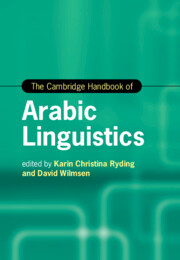Book contents
- The Cambridge Handbook of Arabic Linguistics
- Cambridge Handbooks in Language and Linguistics
- The Cambridge Handbook of Arabic Linguistics
- Copyright page
- Contents
- Figures
- Tables
- Notes on Contributors
- Acknowledgements
- Abbreviations
- Introduction
- Part I Arabic Applied Linguistics
- 1 Arabic Applied Linguistics
- 2 Language Planning in the Arab World in an Age of Anxiety
- 3 The Study of Arabic Language Acquisition
- 4 Issues in Arabic Language Testing and Assessment
- 5 Arabic Study Abroad
- 6 Models of Arabic Pronunciation
- Part II Arabic Variation and Sociolinguistics
- Part III Theoretical and Descriptive Studies
- Part IV Arabic Computational and Corpus Linguistics
- Part V Arabic Linguistics and New Media Studies
- Part VI Arabic Linguistics in Literature and Translation
- Index
- References
6 - Models of Arabic Pronunciation
from Part I - Arabic Applied Linguistics
Published online by Cambridge University Press: 23 September 2021
- The Cambridge Handbook of Arabic Linguistics
- Cambridge Handbooks in Language and Linguistics
- The Cambridge Handbook of Arabic Linguistics
- Copyright page
- Contents
- Figures
- Tables
- Notes on Contributors
- Acknowledgements
- Abbreviations
- Introduction
- Part I Arabic Applied Linguistics
- 1 Arabic Applied Linguistics
- 2 Language Planning in the Arab World in an Age of Anxiety
- 3 The Study of Arabic Language Acquisition
- 4 Issues in Arabic Language Testing and Assessment
- 5 Arabic Study Abroad
- 6 Models of Arabic Pronunciation
- Part II Arabic Variation and Sociolinguistics
- Part III Theoretical and Descriptive Studies
- Part IV Arabic Computational and Corpus Linguistics
- Part V Arabic Linguistics and New Media Studies
- Part VI Arabic Linguistics in Literature and Translation
- Index
- References
Summary
Kassem Wahba argues for paying equal attention to the phonology of the dialects in the teaching of Arabic as a foreign language, noting, not without some frustration, that the conceptions of what constitutes Arabic or the legitimate study thereof were determined by the medieval grammarians of the language, who collectively defined what was to become the Arabic of formal writing and declamation, paying little heed to dialect variation in the language. Regardless, students of the language in the twenty-first century need to and want to learn how to use Arabic as it is spoken and written, which means, he argues, reconceiving how the phonology of Arabic is taught to include dialect variants as legitimate realizations of underlying historical forms.
Keywords
- Type
- Chapter
- Information
- The Cambridge Handbook of Arabic Linguistics , pp. 127 - 152Publisher: Cambridge University PressPrint publication year: 2021

